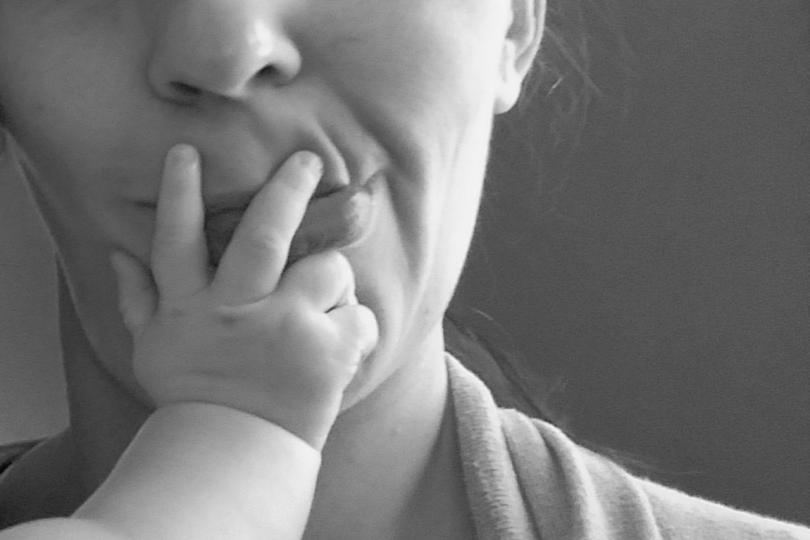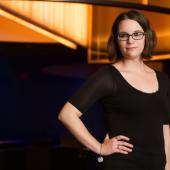Day 9: Female Sexuality at the Fringe

I’ve recently started an MFA program, which has utterly filled me with inspiration and ideas. One of these ideas comes from a mentor who shared her perspective on writing: good writing, she said, should be both a trapdoor and an anchor. It helps us escape but also better grounds us in the world that surrounds us. During one of our writing workshops, my playwriting cohorts and I discussed how little female sexuality is featured in mainstream culture. With the double standard we have towards women and sex as well as the virgin/slut double bind that continues to be reinforced in our culture, I want to focus on the representation of female sexuality at Fringe. I grew up in a conservative area, attended Catholic school and then public school where sex ed focused strongly on abstinence and little else. I spent a lot of my time being sexually confused – it has only been in the last years or so where I’ve gotten a better understanding of myself, which has personally made me interested in breaking down boundaries around discussions of sexuality, and watching shows that do this in different and risky ways. Of course, Fringe representation is different than mainstream culture. There's more opportunity for female writers to share their work, more freedom, and less stigma around issues seen as controversial elsewhere. Fringe is the perfect place to see the anchor/trapdoor effect in action, as well as a place to experiment; to play with different storytelling techniques, to take risks and do something new.
Sexuality and Motherhood
Being a mother is not sexual – it’s more ineffable than that and, not being a mother, I can’t comment on my personal feelings towards this. However, the first show of my day, Mother’s Milk, captures a variety of stories, both about mothers and relationships with mothers that delve into different stories, from a piece about adoption, to an unexpected pregnancy with an abusive husband, to a daughter planning a wedding with her same-sex partner and trying to help her mother feel involved in a ceremony that is nothing like what the mother ever expected. Two pieces particular stood out with my focus. “Conversations with Mrs. Dein” is about a woman who had suffered miscarriages and was recommended to have a hysterectomy – a procedure which, in 1968, required permission from her husband in order for the operation to continue (utterly mind-boggling to my millennial perspective). “Ballsy Enough” focuses on a young woman whose mother is a staunch Catholic and worked for an anti-abortion organization. When the young woman gets pregnant and decides having an abortion is the best option for her, her mother is forced to confront what abortions are really like, rather than the assumptions taught to her. Afterwards, the mother grows to support Planned Parenthood and takes a different stand. Compiled of vignettes and songs, Mother’s Milk is personal, simple, and heartfelt stories dwell on stories of mothers but also women in general.
Sexuality and Exploration
Next, I saw Becoming Inga, a one-woman show performed by Colleen Kruse. After losing her job as a radio talk show host, she decided to apply for a Craigslist ad at a “nondescript health spa” as a fetish worker. Weaving tales of her clients and their experiences with her amongst her own tale of moving towards sobriety, Colleen describes how life, for her, is an exploration of doing something different. She chooses to take the job far outside the range of anything she’s done before not just because she needs the money, but because it interests her. Asking the question of “How do you reinvent yourself in a fishbowl?” Colleen learns that leading a double life helps her grow to be a person she admires and wants to be. As Inga, the person she becomes with her clients, she helps them fulfill specific desires, find specific wants, or expose fantasies they never knew they had. But she also discovers how her job allows her to regain control over her life and redefine who she is. Combating a Christian upbringing (in which her mother, having found her masturbating one night, prays with her and tells her threateningly, “God is always watching”), Colleen grew towards a positive view of sex, especially for her clients. With client Richard, who becomes the beautiful Renee while working with her, Colleen never tries to define Richard because she doesn’t know him – she only knows Renee.
The honest, frank discussion of sex and sexuality is refreshing and normalizes perspectives that might otherwise be mocked or shunned. With positivity towards fetish and sex work and different expressions of sexuality in women, Becoming Inga is a feel-good show that embraces different and creates an environment of comfort and pleasure.
Sexuality and Stigma
The Abortion Chronicles is one of the toughest pieces of theater I’ve sat through and also one of the most important works I’ve seen this year. Working to end stigma about abortion and show that all stories are one story (simplified down to “I’m pregnant and I can’t be”), the show captures the nuances of each tale while reinforcing the idea that a woman’s right to choose is one that is necessary and important. Through various vignettes from women who have gone through abortions, Planned Parenthood employees, couples, and family members, each story has the power to affect the audience in different ways. Some made me laugh, others made weep, others made me wish I had tissues to share with those weeping around me. Knowing that these are true stories, some of which are performed by the very people who experienced them adds an additional level of rawness, honesty, and power to fight against what is not supposed to be spoken about. With arguments against protesters who work to keep people silent and ashamed and reminders that no one wants to have an abortion but sometimes it is the best choice, The Abortion Chronicles shows the loss and hardship women experience as well as the reactions by those around them. In this cohesive piece that links all the stories together in the waiting room of a Planned Parenthood facility, the poignancy is made all the more necessary by an election year. It truly is not to be missed and, if you were affected the way I was, you might look into how you can help to create change beyond the walls of the theater.
Sexuality and...Brothels of the Future?
It was difficult to switch gears in the thirty minutes before the final show of the day, and I walked into All Night Check with a very different mindset. While being handed out a ballot to vote for a “madam president of the brothel of the future,” I wondered what I was getting myself into. I wondered this for the entire performance. Making a pun on the double meaning of “madam,” this show focuses on the objectification of women. It imagines a future where women compete in a sexual contest of sorts to prove that they are the best candidate to lead a USA in which fulfilling male sexual desire is the most important political issues. Listing categories of women that sound like – and are – Halloween costumes, the madams voice their support for certain images, from plus-sized mall cop to sexy George Washington. Followed by a “performance” category to illustrate how each candidate can fulfill the audience’s desires, each madam took their platform of fulfilling male fantasy, “traditional” pin-up style desire, and dominatrix demands, while interspersing criticism of the porn industry, the male gaze, and contradictory opinions (such as saying “We don’t fit into categories” after listing off numerous “sexy” personas).
This show was the most raw and unpolished of the four I saw, which worked in some ways and didn’t in others. There was an improvisational edge that added a level of discomfort; I didn’t know what would come next. But there was also an added layer of discomfort with audience participation, sexual innuendo and mimed sexual action that didn’t look entirely comfortable to the actors, and a lack of clarity in the kind of world being inhabited. I never completely understood what the brothel of the future was or how we’d ended up there. The politics of the piece also seemed fuzzy. The argument seemed to be that men are pandered to for sexual desires and nothing was said about women’s desires- the women existed only to serve male fantasies. The madams went back and forth between seeming to love their campaign and hating what they had to represent, but this shift didn’t make sense in terms of what they seemed to want. Sex took on a dirty, illicit quality in this piece, making porn, pin-ups, threesomes, and sub/dom relationships sound perverse. I got a little lost in the story and I never really figured out where I was supposed to be. Still, the piece was risk-filled and kept me thinking long after walking out of the theater doors.
Sexuality and Representation
Beyond the shows I attended, I’d love to see an even wider representation of various aspects of sexuality. Fringe is a wonderful place of myriad performances, each with a different tone and perspective. Each year brings a greater inclusion of differing perspectives on feminism, GLBTQA issues, and race. The four shows I saw each broke down boundaries, took risks, and gave me plenty of new insights. I’m pleased to see so much discussion around topics that not long ago were labeled too taboo or difficult to discuss. In stories that release me from my own personal story but lead me back to the world I inhabit, these performances – though not always flawless – push for a better, wider representation of women and the freedom to speak and have your own voice.




